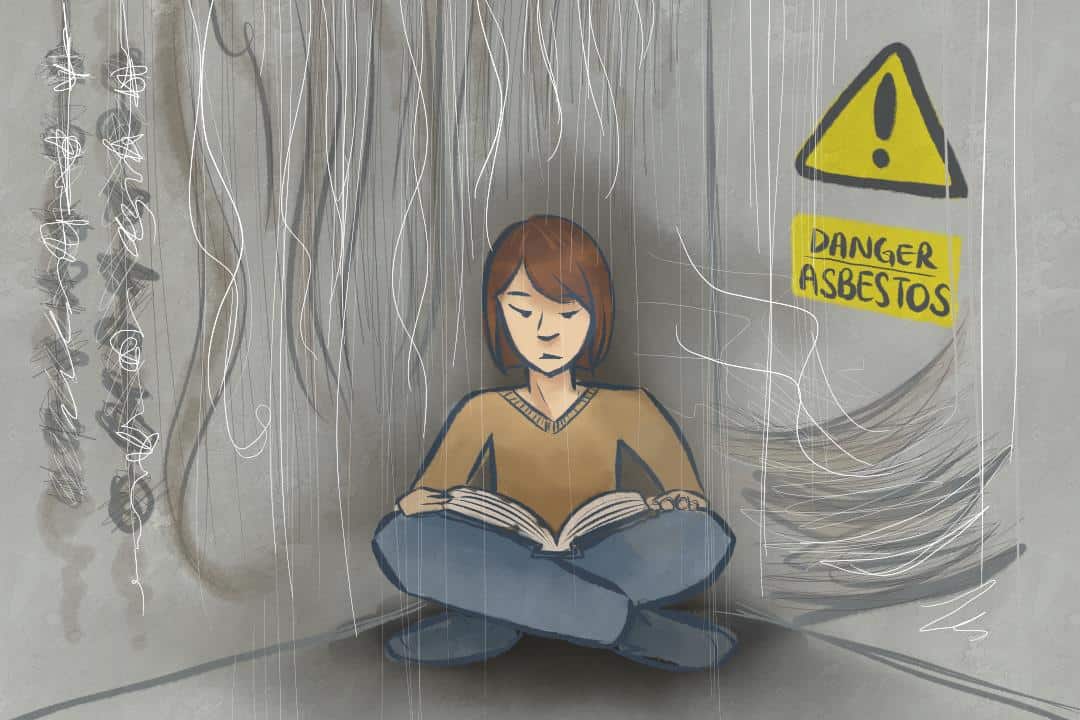For anyone still unaware, asbestos exposure is not good for you. For much of the twentieth century, asbestos materials were installed almost everywhere as cheap fireproofing. Now, it is now effectively banned in Canada and for good reason.
Health Canada warns that breathing in even microscopic amounts of asbestos can cause severe long-term health problems. These include aggressive cancers and asbestosis, a disease that scars the lungs and impairs breathing.
Often, people only experience the effects of inhaling asbestos fibres decades after the fact.
Any potential exposure to asbestos is a big deal. This explains why in 2017, when “unusual dust” was discovered in the Medical Sciences Building, rooms were cordoned off for days. It is also why the University of Toronto Faculty Association (UFTA), along with other labour groups, are doubting the clean bill of health U of T has given to its air quality.
At the centre of this dispute is who and what determines the acceptable amount of asbestos in the air.
The national occupational standard exposure limit for asbestos concentration in construction sites is 0.1 fibres per cubic centimetre (0.1 f/cc), which poses a very small risk on exposure. U of T’s report decided that the acceptable amount is 0.5 f/cc. However, the provincial government’s guideline, while not legally enforceable, is 0.4 f/cc. The UFTA wants U of T’s asbestos level to be closer to Queen’s Park recommendation, and preferably around a limit of 0.1 f/cc.
If those differences sound a bit trivial and pedantic, it is because they might be. Even the Vice-President of Operations and Real Estate Partnerships Scott Mabury, who is responsible for U of T buildings and their safety, admitted that it’s very hard to tell the difference between U of T’s and Queen’s Park’s limits. Mabury is also the former Chair of the Chemistry Department.
U of T contends that it has reached its limit based on what is tangible, achievable, and legal. But the UFTA is also right to demand more. The university must do everything it can to ensure that our community is not exposed to asbestos. That not everything is being done to protect its members from exposure to asbestos is troubling.
However, what should really worry us is the UFTA’s allegations of how U of T decided upon its asbestos exposure limitation. The UFTA has made allegations of a “democratic deficit” in the process, meaning that the union was only informed of feedback sessions at the last minute and that the panel responsible for making the decision was overly close to U of T officials. The union also claims the panel did not include enough asbestos experts.
The implications of these allegations are serious and troubling. If the culture and formal process for deciding how to go about safety are being compromised and rushed in order for U of T to get what it wants, then this issue goes beyond how many fractions of particles are in the air. It affects every aspect of safety at U of T: the buildings, the people inside them, and whether the administration will do everything possible to ensure the safety of our community.
Ideally, there would be no asbestos fibres in the air at all, but past architects and engineers made choices that decided otherwise. All that can be done now is to minimize fibres to the point that the risk becomes negligible.
Instating a limit lower than where U of T has placed so far may prove very tricky. But when it comes to breathing in potentially lethal industrial fibres, having the university only reach a legally-sound common denominator is hardly reassuring. It is definitely not the standard by which U of T came to be recognized as one of the best employers and schools in the country. This does not leave us breathing easy.
Martin Concagh is a second-year Political Science student at New College.


